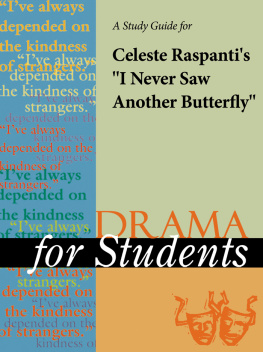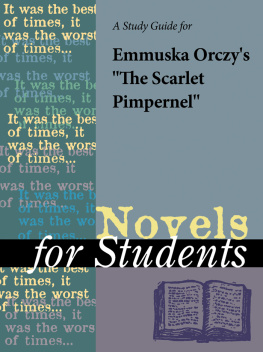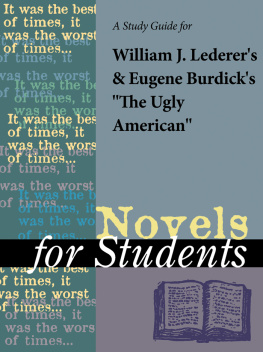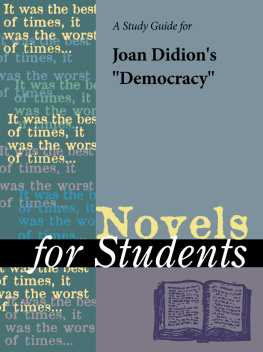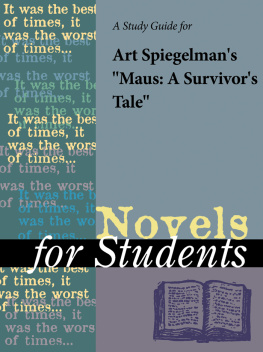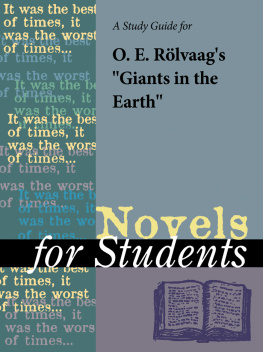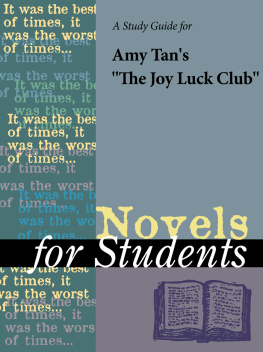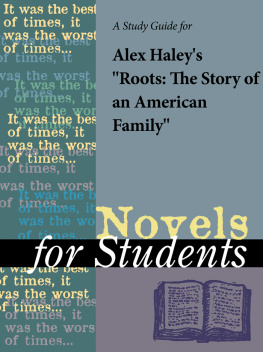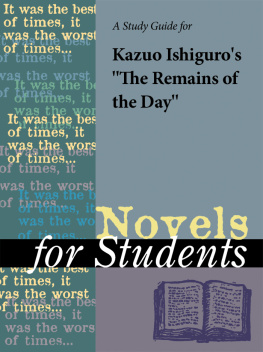TABLE OF CONTENTS
Guide
Novels for Students, Volume 14
Staff
Editor: Jennifer Smith.
Contributing Editors: Anne Marie Hacht, Michael L. LaBlanc, Ira Mark Milne, Daniel Toronto, Carol Ullmann.
Managing Editor, Content: Dwayne D. Hayes.
Managing Editor, Product: David Galens.
Publisher, Literature Product: Mark Scott.
Literature Content Capture: Joyce Nakamura, Managing Editor. Sara Constantakis, Editor.
Research: Victoria B. Cariappa, Research Manager. Sarah Genik, Ron Morelli, Tamara Nott, Tracie A. Richardson, Research Associates. Nicodemus Ford, Research Assistant.
Permissions: Maria L. Franklin, Permissions Manager. Shalice Shah-Caldwell, Permissions Associate. Deborah Freitas, IC Coordinator/Permissions Associate.
Manufacturing: Mary Beth Trimper, Manager, Composition and Electronic Prepress. Evi Seoud, Assistant Manager, Composition Purchasing and Electronic Prepress. Stacy Melson, Buyer.
Imaging and Multimedia Content Team: Barbara Yarrow, Manager. Randy Bassett, Imaging Supervisor. Robert Duncan, Dan Newell, Luke Rademacher, Imaging Specialists. Pamela A. Reed, Imaging Coordinator. Leitha Etheridge-Sims, Mary Grimes, David G. Oblender, Image Catalogers. Robyn V. Young, Project Manager. Dean Dauphinais, Senior Image Editor. Kelly A. Quin, Image Editor.
Product Design Team: Pamela A. E. Galbreath, Senior Art Director. Michael Logusz, Graphic Artist.
Copyright Notice
Since this page cannot legibly accommodate all copyright notices, the acknowledgments constitute an extension of the copyright notice.
While every effort has been made to secure permission to reprint material and to ensure the reliability of the information presented in this publication, Gale neither guarantees the accuracy of the data contained herein nor assumes any responsibility for errors, omissions, or discrepancies. Gale accepts no payment for listing; and inclusion in the publication of any organization, agency, institution, publication, service, or individual does not imply endorsement of the editors or publisher. Errors brought to the attention of the publisher and verified to the satisfaction of the publisher will be corrected in future editions.
This publication is a creative work fully protected by all applicable copyright laws, as well as by misappropriation, trade secret, unfair competition, and other applicable laws. The authors and editors of this work have added value to the underlying factual material herein through one or more of the following: unique and original selection, coordination, expression, arrangement, and classification of the information. All rights to this publication will be vigorously defended.
Copyright 2002
The Gale Group
27500 Drake Road
Farmington Hills, MI 48331-3535
All rights reserved including the right of reproduction in whole or in part in any form.
ISBN 0-7876-4897-3
ISSN 1094-3552
Printed in the United States of America.
10 9 8 7 6 5 4 3 2 1
The Pigman
Paul Zindel
1968
Introduction
Paul Zindel's first novel, The Pigman, published in New York in 1968 by Harper & Row, is a story of two dispossessed young people who find a surrogate parent in Angelo Pignati, an Italian man who has never had children and whose wife is dead. He shares his humor and joy in life with them, and in his presence, they are allowed to be carefree and childlike in a way that they can't be with their own families.
The novel is considered by many critics to be the "first truly [young adult] book," according to Teri Lesesne in an interview with Zindel in Teacher Librarian. When Zindel wrote the book, he realized that few books depicted teenagers dealing with real problems in the modern world. He also talked to many teenagers who said they hated to read or had been branded as troublemakers, and he targeted his story to them. Zindel's honesty and humor "broke new ground, and prepared the soil" for many excellent young adult books to come, according to Lesesne.
In an interview with Scholastic students, Zindel said that he was inspired to write the book while he was house-sitting in a fifty-room "castle" on Staten Island. A teenage boy trespassed on the grounds, and when Zindel went out to yell at him, he found out that the boy was actually a very interesting person. The character of John Conlan in The Pigman was modeled on this young man. The character of Lorraine was modeled on a student in one of the chemistry classes Zindel taught. He told the interviewer, "I thought, what a wonderful ad-venture it would be to team those two life models for me into a story in which they met an eccentric, old mentor figure."
Author Biography
Paul Zindel was born on May 15, 1936, in Staten Island, New York, and grew up on Staten Island with his mother and sister. His father, a police officer, abandoned the family when Zindel was very young, and Zindel rarely saw him. His mother struggled to make ends meet, and because of their poverty, the family moved often. Zindel felt like a misfit because he had no father and because the family moved so much, but later realized that this feeling of being different from others had fueled his imagination. He wrote his first play in high school, and enjoyed the praise he got from other students for his morbid sense of humor.
He attended Wagner College on Staten Island, where he studied chemistry, but also took a creative writing course with famed playwright Edward Albee, who encouraged Zindel to write more plays. He wrote his second original play during his last year of college.
After college, Zindel worked briefly as a technical writer for Allied Chemical, but he hated the job. After six months, he quit and became a high-school chemistry and physics teacher. While teaching, he continued to write plays; his first staged play was The Effect of Gamma Rays on Man-in-the-Moon Marigolds, loosely based on his own life. The play won several awards, including Best American Play and the Pulitzer Prize for Drama; it was produced on Broadway; and it was made into a film and a television drama.
Charlotte Zolotow, an editor for the publisher Harper & Row, was impressed by the play and asked Zindel if he had any novels in mind. She encouraged him to write The Pigman, his first novel, which was published in 1968. The novel was selected as one of the Notable Children's Books of 19401970 by the American Library Association and was named one of their Best of the Best Books for Young Adults in 1975. It was also one of the Child Study Association of America's Children's Books of the Year in 1968, and was given the Boston Globe-Horn Book Award for Text in 1969. The book was inspired by two teenagers Zindel met, a young man who had many of the adventures that later appeared in the book, and a young woman who was very much like Lorraine, one of the two main characters. The Pigman, an eccentric old Italian man, was based on an Italian grandfather who was a mentor to Zindel when he was young.



